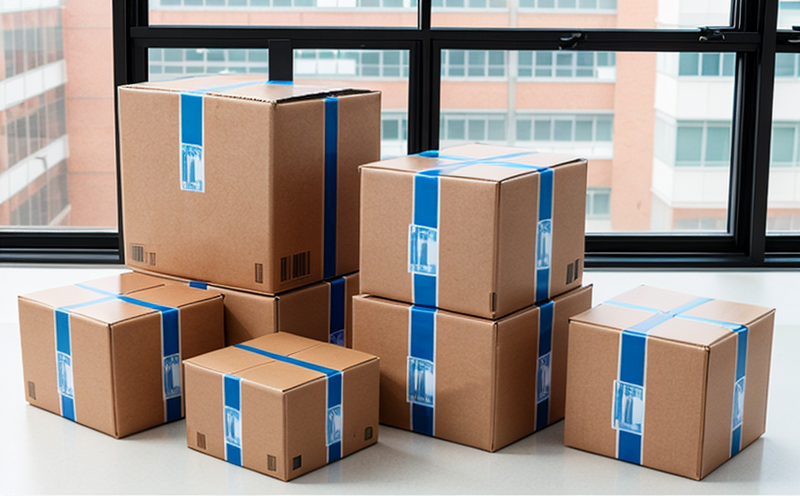ASTM D882 Tensile Properties of Packaging Films Containing Nanomaterials
The ASTM D882 standard is a critical tool for quality managers, compliance officers, R&D engineers, and procurement professionals involved in the evaluation of packaging films. This method provides standardized procedures to determine tensile properties of plastic films and sheets using constant-rate-of-extension loading. When nanomaterials are incorporated into these materials, understanding their effects on mechanical performance is essential.
ASTM D882 is widely used for compliance testing, research development, and quality assurance in the packaging industry. By ensuring that tensile properties meet specified standards, manufacturers can guarantee the durability and reliability of their products. Incorporating nanomaterials into packaging films can enhance various properties such as strength, flexibility, barrier performance, and thermal stability.
The test involves preparing specimens according to ASTM D882 specifications. Specimens are typically cut from the film or sheet in accordance with the standard’s requirements. The testing apparatus applies a constant extension rate until the sample breaks. Tensile stress and strain data are recorded throughout the process, which helps determine important mechanical properties like ultimate tensile strength (UTS), elongation at break, yield strength, and modulus of elasticity.
When nanomaterials are involved, the testing protocol remains similar but with a focus on how these materials affect the overall performance. For instance, nanoclay or carbon nanotubes might be incorporated to improve barrier properties or mechanical integrity. The test results can provide insights into whether the addition of such materials enhances or detracts from the desired characteristics.
The ASTM D882 standard ensures that all tests are conducted under consistent conditions, allowing for accurate comparisons between different batches or types of films. This consistency is crucial when evaluating how nanomaterials influence mechanical properties compared to conventional packaging materials.
| Specimen Preparation | Tensile Testing Parameters |
|---|---|
| Cutting specimens according to ASTM D882 specifications. | Applying a constant extension rate until the sample breaks. |
| Ensuring uniformity and cleanliness of samples. | Recording tensile stress and strain data during testing. |
The results from ASTM D882 tests are essential for ensuring that packaging films meet regulatory requirements and customer expectations. They also play a vital role in the research and development process, helping companies optimize their materials and processes to produce more effective and efficient packaging solutions.
- Ensures compliance with industry standards.
- Provides critical data for quality assurance.
- Aids in the optimization of material properties.
- Helps evaluate the effectiveness of nanomaterials in packaging films.
In summary, ASTM D882 tensile testing is a fundamental procedure for evaluating the mechanical properties of packaging films. When nanomaterials are involved, it becomes an even more powerful tool for assessing their impact on performance parameters like strength and flexibility.
Benefits
The ASTM D882 tensile testing method offers numerous benefits to those working in the packaging industry. Compliance with this standard ensures that products meet rigorous quality standards, which is essential for maintaining a reputable brand image and gaining customer trust.
- Regulatory Compliance: Ensures adherence to international standards like ASTM D882, enhancing confidence among regulatory bodies and customers alike.
- Quality Assurance: Provides consistent data that can be used to monitor the quality of packaging films over time. This helps in identifying any inconsistencies or trends early on.
- Research Optimization: Allows researchers to explore how nanomaterials affect mechanical properties, leading to innovations and improvements in product design.
- Market Differentiation: Demonstrates a commitment to high-quality packaging that meets the evolving needs of consumers. This can be a key differentiator in competitive markets.
The use of ASTM D882 testing also facilitates better communication between various stakeholders within an organization, from R&D teams to procurement officers. It serves as a common language and set of expectations across departments, ensuring everyone is working towards the same goals.
Why Choose This Test
Selecting ASTM D882 tensile testing for evaluating packaging films containing nanomaterials is a strategic decision that offers several advantages. Firstly, it provides a standardized approach to measuring mechanical properties, which ensures consistency and reliability in test results.
- Consistency: The method eliminates variability by using precise procedures outlined in ASTM D882.
- Rigorous Standards: By adhering to this international standard, you ensure that your packaging materials meet the highest industry standards.
- Data Accuracy: Detailed data is collected during testing, allowing for accurate analysis and comparison across different batches or types of films.
- Innovation Support: The test results can help identify areas where nanomaterials enhance performance, fostering innovation in packaging solutions.
Moreover, this test is particularly beneficial when incorporating nanomaterials into your products. It allows you to assess how these materials influence key mechanical properties such as strength and flexibility. This information is invaluable for optimizing material choices and improving overall product quality.





